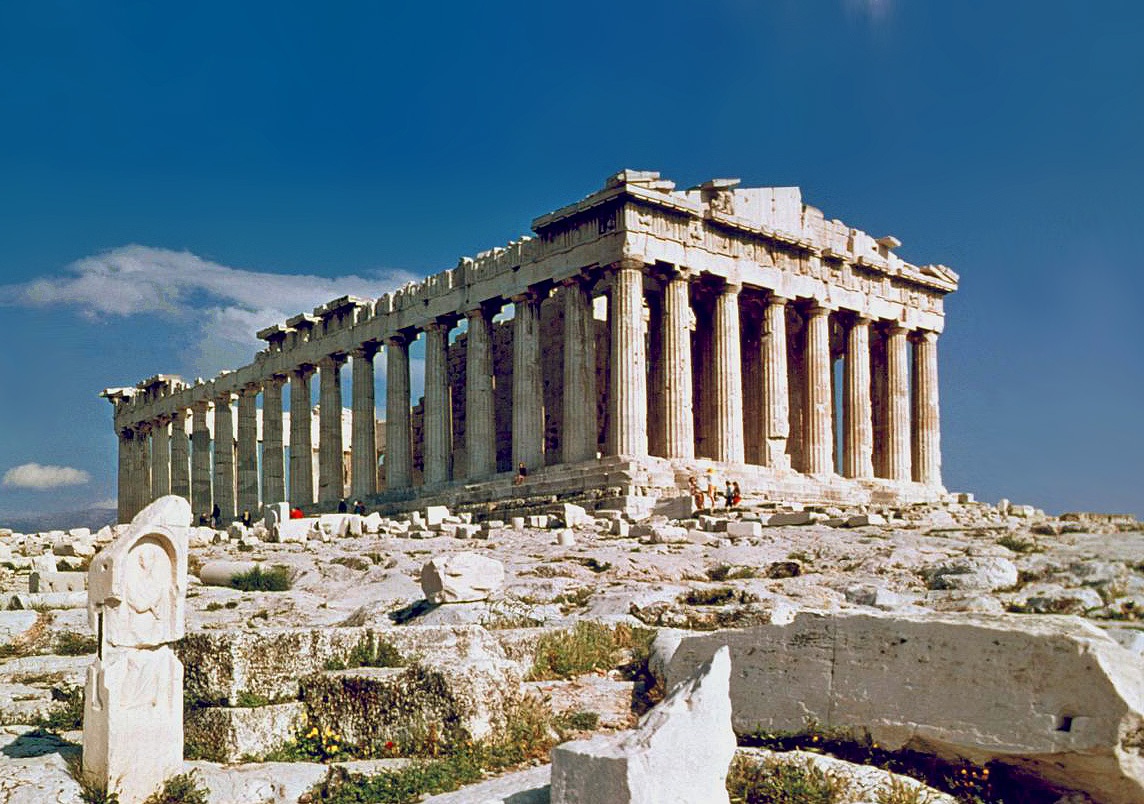


When most Americans think "Greek," we either think yogurt or huge, white, amazinly detailed columns, like on the White House. Even beyond appearing in prominent buildings of power, Ancient Greek Architecture has affected Western culture ever since it was first conceived. This style of architecture flourished on the Greek mainland and the Peloponnese, the Aegean Islands, and in colonies in Anatolia and Italy for a period from about 900 BC until the 1st century AD, with the earliest remaining architectural works dating from around 600 BC. Ancient Greek architecture is distinguished by its highly formalised characteristics, both of structure and decoration. This is particularly so in the case of temples where each building appears to have been conceived as a sculptural entity within the landscape, most often raised on high ground so that the elegance of its proportions and the effects of light on its surfaces might be viewed from all angles. This is why this style is used on so many important government buildings, because it symbolizes power and strength. The following table shows some famous greek buildings.
| Name | Built | Description |
|---|---|---|
 |
432 BC | Perhaps the most famous Greek building of all time, the Parthenon is an example of a Greek temple, which were considered the most important Greek buildings. The Parthenon was built in Athens as a temple to Athena, the Goddess of Wisdom, whom the Athenians considered their patron deity. This temple exemplifies many of the most recognizable characteristics of Greek architecture, such as large columns and a white walls. Construction began in 447 BC when the Athenian Empire was at the peak of its power. It was completed in 438 BC although decoration of the building continued until 432 BC. It is the most important surviving building of Classical Greece. Its decorative sculptures are considered some of the high points of Greek art. The Parthenon is regarded as an enduring symbol of Ancient Greece, Athenian democracy and western civilization, and one of the world's greatest cultural monuments. |
 |
161 AD | The Odeon of Herodes Atticus is the second most important type of Greek building, an open air theatre. During Classical Greece, theatre and acting became very popular and evolved into an open air theatre event. The sloped seating was arranged in a semicircle around the stage. Modern theatres are very much influenced by the advanced style of these old Greek monuments. |
 |
776 BC | Stadiums- these are things that we still use today. We have our own stadiums for sports such as soccer and football. However, the very first stadiums were invented by the Greeks for the Olympics, something that we still have today. The picture shown is of the ancient stadium at Olympia, the most important stadium for Olympic sporting events in Greece. The track is 212.54 m (697.3 ft) long and 28.5 m (94 ft) wide and surrounded by grassy banks on all sides. All the seats were made of mud and on the southern slope there was a stone platform, the exedra, on which the Hellanodikai, the judges, would sit. Opposite this, on the north slope, was an altar to Demeter Chamyne. The stadium could hold 50,000 spectators. The fact that we still have these stadiums and the Olympics shows how influential Greek culture has been on the Western world. |